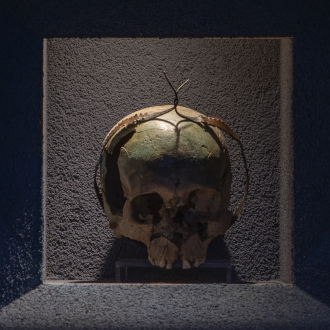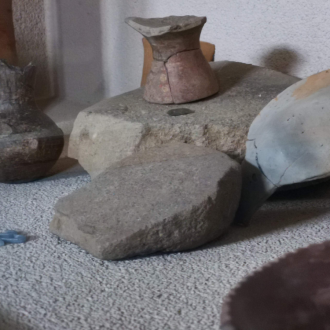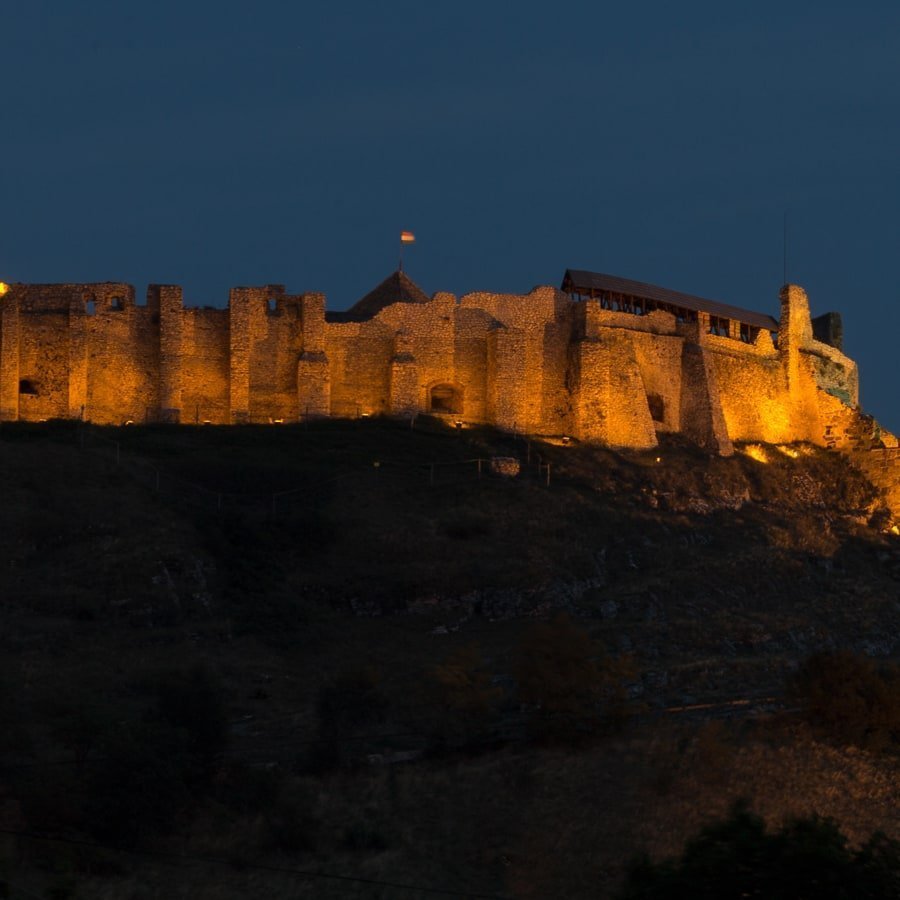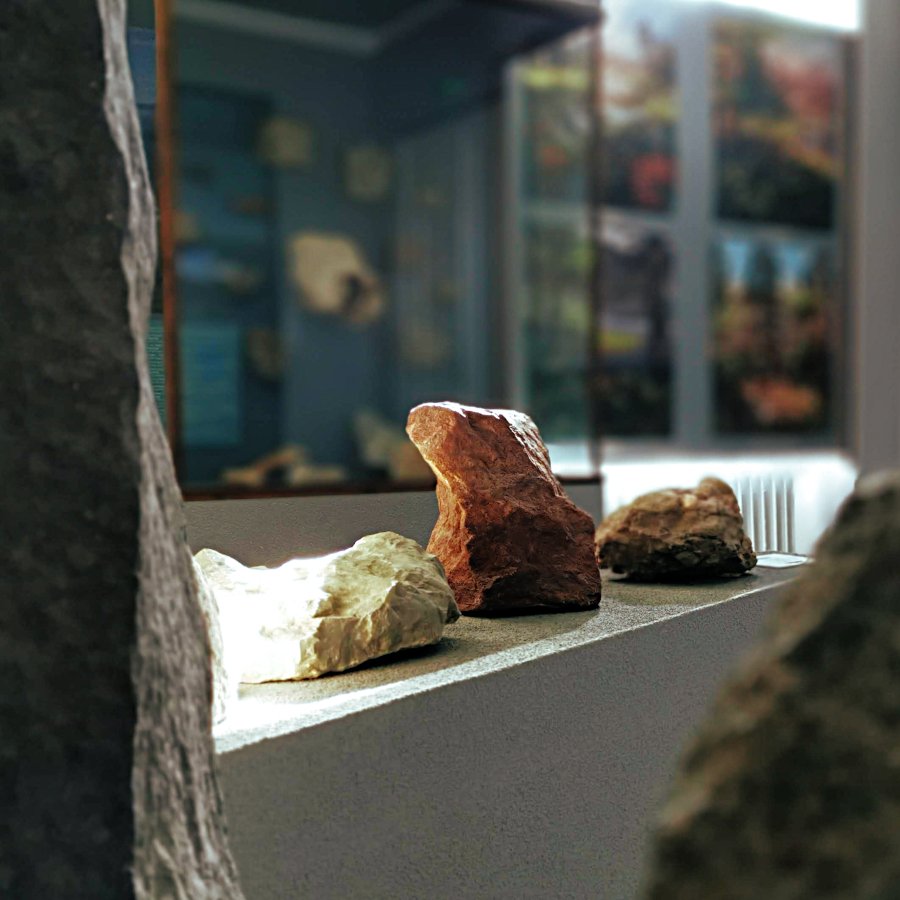The relationship between Lake Balaton and people dates back thousands of years. Our exhibition explores long-forgotten cultures.
When did the first people appear and how did they live around Lake Balaton?
On a LED map in the exhibition space, the process of several millennia takes place in front of our eyes in a few minutes, showing how the areas around the lake were gradually populated.
In our showcases we display the archaeological relics of the populations of the Stone Age and the Copper Age. It is interesting that in one period of the Stone Age (Mesolithic), a drier, warmer climate occurred then that of today’s, and resulted in a lower water level of Lake Balaton, therefore the habitats of the populations living here at that time are probably now covered by the waters of the lake. Nevertheless, we know for sure that the Lake Balaton region was not uninhabited even then.
The New Stone Age (Neolithic) brought about far-reaching changes: the spread of food production, pottery and many other Neolithic achievements in the Balaton region can be linked to the Starčevo culture of Balkan origin. In the swamp world of the ‘Small’ Balaton, archaeologists have uncovered many relevant archaeological remains. In addition, our exhibition contains the material relics of the so-called Linear Pottery Culture. The name of the culture also refers to the scraped linear, grooved decoration of their ceramic pots.
Have you ever heard of the mysterious, prehistoric mass grave unearthed here by chance?
The exhibition features ceramics richly painted or scraped with geometric patterns to reveal their beliefs from the animal-shaped or geometric altars of the population of the Lengyel Culture, who were well acquainted with, and used the crossings of Lake Balaton. A unique finding belongs to them, unique to this day that was unearthed by chance: and you can learn more about this mysterious, prehistoric mass grave in our exhibition!
You can imagine the people’s lives of this period on the basis of their tools and grave goods of the groups of people who were living near Lake Balaton in the Copper Age – the Balaton-Lasinja Culture, the Culture of quilted grooved pottery, the Protobolerase Horizon, the Baden Culture. As proof of the high-quality metalwork of the Baden Culture, we showcase the copper tiara that came to light in 1952 in Vörs. Also, our exhibition will explain why this symbol of power is a particularly valuable find.
The second part of the exhibition deals with the topic of the regulation of Lake Balaton by human hands. We offer 16-18th century maps of Lake Balaton, a model of the Siófok wooden sluice, and lots and lots of photos documenting the coastal constructions, ports and the drainage of Kis-Balaton providing an illustrative picture of how people have intervened and are interfering in the life of Lake Balaton.








